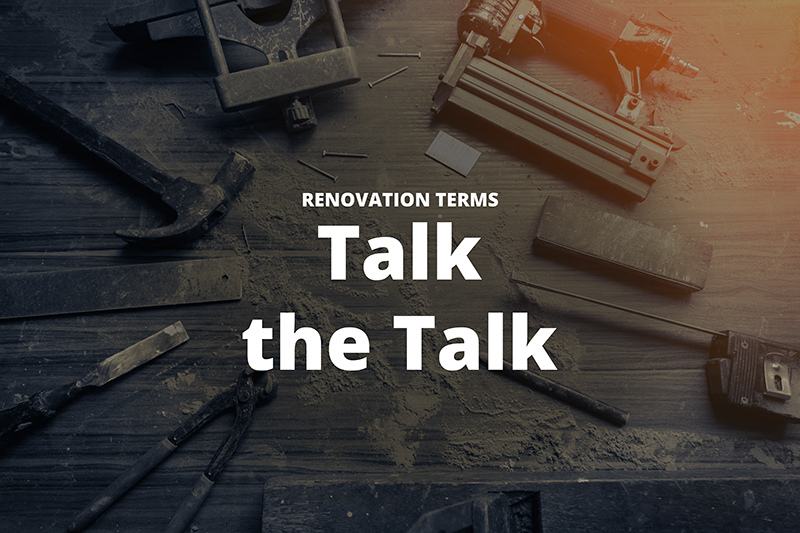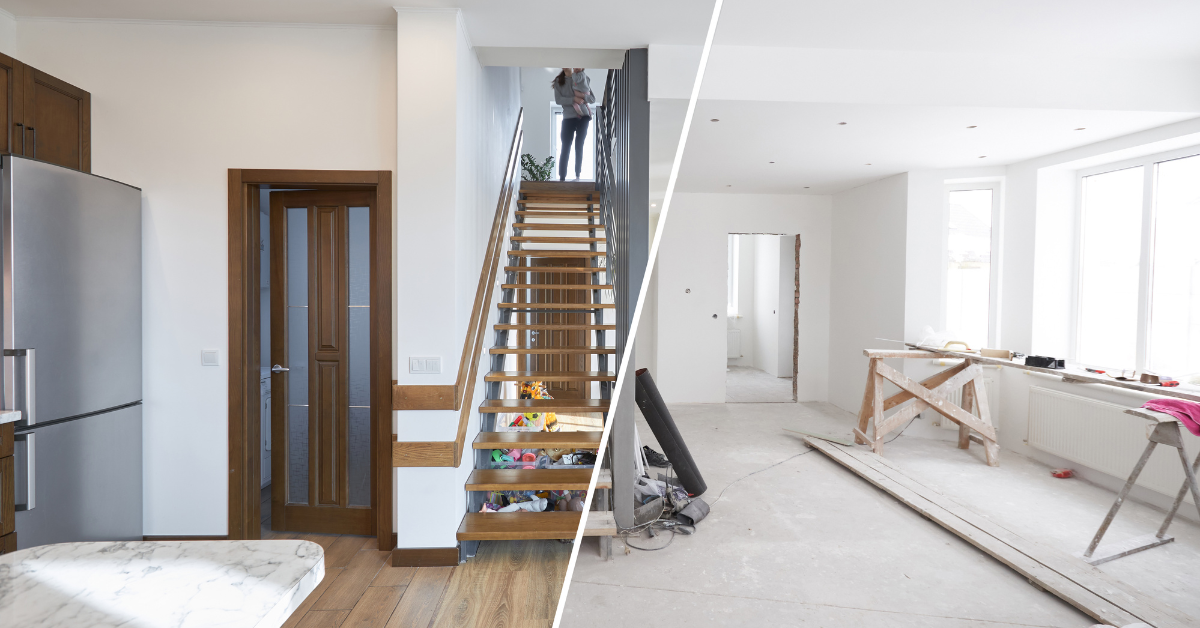
Every industry has its own jargon and acronyms, and the home renovation field is no different. While no homeowner is expected to completely understand all the lingo used around a jobsite, knowing some of the key terminology will you help better communicate with your contractor and, ultimately, avoid any misunderstandings with your project. This is part 1 of 3 . You can read the second part here, and the third here.
RenoMark
We’d be remiss if we didn’t start with RenoMark. RenoMark recognizes members of the Canadian Home Builders’ Association who abide by the RenoMark Code of Conduct, so that you can have confidence in your renovation professional. Among other items, the Code of Conduct includes carrying all applicable licenses and permits, maintaining a safe and organized work site, having/working with subcontractors that have workplace safety and employers’ liability coverage, and always providing a written contract. You can find a RenoMark professional here.
The ABCs of HVAC
HVAC is an acronym for heating, ventilation, and air conditioning. Understanding the basics of HVAC is important even beyond renovations involving those specific systems. If you’re building an addition, for example, you may need a larger furnace or A/C unit to provide sufficient heating and cooling for the larger footprint of the house. Other projects, such as removing walls for an open-concept design, might require re-routing ductwork.
Be sure to ask your HVAC installer about the efficiency ratings of the equipment you’re installing. The higher the rating, the less energy you consume to heat and cool your house.
R-Value Proposition
R- and RSI-values refer to a building material’s resistance to heat flow. The higher the number, the better the material is at minimizing heat transfer – making your home more comfortable and energy efficient. R-value is the imperial measurement, and RSI is metric. While Canada is technically a metric country, builders and material manufacturers tend to think in imperial.
If you ever need to convert, divide the R-value by 5.678, or multiple the RSI-value by the same figure. One inch of fibreglass insulation, for example, has an R-value of 3.5 or an RSI-value of 0.6164.
Building a Better Envelope
The phrase “building envelope” refers to all of the components of a house that separate the outside from the inside. These include the foundation, exterior walls, windows, doors, and roof.
The “tighter” the envelope, the more energy efficient the home is.
Modern homes incorporate a number of materials and design techniques to ensure the envelope is as airtight as possible. These can include adding ridged insulation to the exterior wall before the final cladding (brick, siding, etc.) is applied, using double- or triple-paned windows (see “Window Wise” in Part 2 [linked] of this blog), and sealing tight all the openings (or “penetrations”) in the envelope, such as the gaps where the natural gas line enters the building.
While older, drafty homes had natural (though inefficient) ventilation, as you make a home more airtight, you need to bring in fresh air. The common means of achieving this is to install a heat recovery ventilator (HRV), which also removes excess moisture from the air.
Net Zero
In homebuilding, Net Zero (NZ) refers to houses that produce at least as much energy as they consume over the year. This is achieved by minimizing the amount of energy the home consumes by using an appropriate level of insulation and ensuring the building envelope is as airtight as possible (see above), using energy efficient appliances, lighting, and plumbing fixtures, and properly sizing the building’s HVAC equipment.
The little energy that is consumed is then offset by installing a green energy system, usually solar panels, to generate electricity. The house and solar panels are most often connected to the electrical grid. During peak energy generating periods (long, sunny summer days), excess energy not needed to operate the house is fed to the grid. During those dreary winter days when less solar energy is available, the home relies more on grid-supplied power. Depending on your energy consumption habits, the home may even produce a “net” excess of energy.
If you cannot connect to the local electrical grid any excess electricity that you don’t use can be stored in batteries designed for this purpose and located within your home. When your home needs extra energy (if the sun’s not out, for example), it uses the energy from the batteries.
A Net Zero Ready (NZr) home is built to the same efficiency standards but does not yet have energy generating equipment installed.
The Canadian Home Builders’ Association (CHBA) recently launched a pilot project to develop and discover best practices for renovating existing homes so that they can be labelled as NZ/r.
Click here to read the second part of our Talk the Talk blog.



